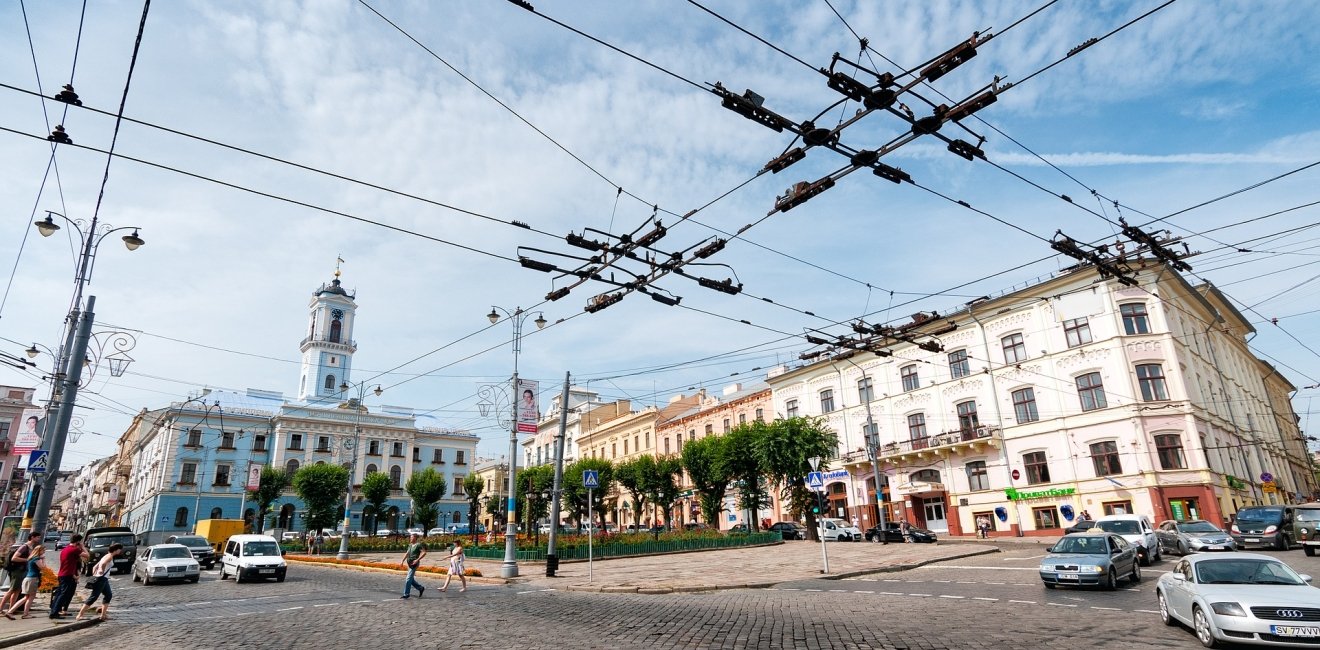
A blog of the Kennan Institute
BY ANDRIAN PROKIP
Early spring in Ukraine was marked not only by a pandemic but also by an energy crisis, the major causes of which had been building for years. Lack of a coherent national energy policy is the chief culprit, followed closely by overregulation and the politicization of some parts of the energy sector. Acting Minister of Energy and Environmental Protection Olga Buslavets has called the situation the worst crisis in recent years. Mounting debt in this sector has real consequences for a country trying to shore up a declining economy.
A year ago, when Volodymyr Zelenskyy was inaugurated as president, the energy sector was the first concern of his team. But this pronounced focus was not followed by effective action. In April 2020, debts among participants in the energy market reached critical levels. With the COVID-19 pandemic, energy demand and production have both declined, and the payment regime is fraying. A pessimistic scenario predicts massive blackouts and nonpayment of salaries to employees of the energy companies—something that Ukrainians last witnessed in the late 1990s.
Drowning in Debt
By the end of April, Ukrainian electricity distribution companies owed the system operator Ukrenergo approximately $187 million. The major part of this debt, $176 million, was the result of households delaying payment of their electricity bills.
Another source of debt is the state-run “Guaranteed Buyer” company, which is responsible for subsidizing households and renewable energy producers. It owes Energoatom—the state-owned company operating all nuclear power plants—about $150 million. In addition, the company is scheduled to pay approximately $237 million to renewable electricity producers and about $7.5 million to the big hydropower plants.
But these debts are just one part of the problem. After several years of preparation, a new electricity market model was introduced on July 1, 2019, in Ukraine. As part of a broader European integration effort, this reform was designed make Ukraine’s electricity market more in line with the European market. But the energy sector entered the new era with a debt overhang of $112 billion.
In general, the cumulative debt on the electricity market amounts to about $1.87 billion, with about the same figure for the gas market. For comparison, Ukraine’s GDP last year was $154 billion.
In many cases, the energy crisis was caused by misregulation, whose effects were amplified by the COVID-19 pandemic.
Green Energy and Coal
A huge part of the recent debt accumulation reflects nonpayment of the feed-in tariff to the renewable energy producers. Energoatom is a big source of these payments. It sells cheap electricity to the Guaranteed Buyer, which resells it further at market prices, using the revenues realized in this fashion to subsidize households and renewable energy producers.
The situation was predictable. Two years ago I wrote that the feed-in system, if not changed, would challenge the market’s ability to continue to subsidize renewable energy producers, with a resulting domino effect on energy prices. The energy regulator currently predicts that in 2020, the lack of funds to subsidize renewable sources of energy may reach $0.78 billion.
However, it is impossible to change the tariffs retroactively for already working renewable capacities. Should that happen, the green energy producers would almost assuredly go to court and make the government pay for their losses.
Green energy creates new problems, and “good old coal” is problematic in the old ways. Ukraine still has problems with its state-owned coal mines, which are economically ineffective and rely on state subsidies to survive. This contributes to the snowballing debt as well. No progress has been made toward a state policy to solve the problem; coal mining companies have always been subject to politicization in Ukraine.
Record Stockpiles of Energy
The COVID-19 pandemic and the subsequent quarantine measures have made this complex energy-related debt situation even more challenging. The quarantine slowed economic activity, which was already faltering: industrial production decreased in the last quarter of 2019, leading to a corresponding drop in demand for energy by early 2000. As a result, in April 2020, operations at the biggest Ukrainian private coal mine were suspended.
The surplus of fossil fuels on the Ukrainian market arose from several factors, in addition to the ones just mentioned.
Ukrainian companies stockpiled record volumes of coal and gas last year in preparation for a possible Russia-Ukraine gas transit dispute and consequent shortages. But Naftogaz managed to sign a contract with its Russian counterpart and avoid a gas crisis. For the most part, the stockpiled supplies sat unused, as an extremely warm winter meant less demand for energy than usual.
In a quest for lower energy prices for households, decision-makers allowed direct electricity imports from Russia, which in my opinion was tantamount to inviting a Trojan horse into Ukraine. The price of electricity fell a little, but the biggest beneficiaries in this complicated arrangement were a small group of companies that bought electricity from Russia and Belarus.
Finally, renewable energy production increased in the recent half year, contributing to the surplus of energy on the market in Ukraine. This also posed a challenge to Energoatom, which, ironically, subsidizes renewables.
Pricing Policy and an Overregulated Market
Even after the recent neoliberal reforms, electricity prices for households are still subsidized in Ukraine: citizens receive cheap electricity at the cost of industry, which pays higher prices. Ukraine was supposed to have abandoned this practice long ago, but kept stalling. This issue is now heavily politicized: as a presidential candidate, Zelenskyy promised to decrease households’ spending on utilities. The new prime minister, Denys Shmygal, reiterated that electricity prices for households will remain fixed this year.
Again, the reforms did not make the new electricity market less regulated. Originally, the price restrictions were intended to remain in place for nine months only, but in late 2019 parliament extended the restrictions to 2023.
Policy and Prices
The major cause of the current energy crisis is the lack of a long-term energy policy. For years, energy was hostage to the political games of the government and oligarchs. As part of the post-Soviet “social contract,” politicians kept utility prices low until recently.
With energy a token in political games and subject to unwise policies and unfair competition, the government has been slow to respond to the crisis. Since March, Ukraine has lacked an appointed minister of energy and the heads of some key regulatory bodies dealing with energy and state-owned energy companies. To cope with the crisis, the Ukrainian parliament approved a bill to resolve the debt crisis in the electricity market, but no decision has been reached on the gas market, and the government has been negotiating with renewable energy producers for months.
Thus it was not market-oriented approaches that caused the energy crisis in Ukraine but overregulation and restrictions, which have resulted in a far from efficient market economy.
The opinions expressed in this article are those solely of the author and do not reflect the views of the Kennan Institute.
Author

Director, Energy Program, Ukrainian Institute for the Future

Kennan Institute
After more than 50 years as a vital part of the Wilson Center legacy, the Kennan Institute has become an independent think tank. You can find the current website for the Kennan Institute at kennaninstitute.org. Please look for future announcements about partnership activities between the Wilson Center and the Kennan Institute at Wilson Center Press Room. The Kennan Institute is the premier US center for advanced research on Eurasia and the oldest and largest regional program at the Woodrow Wilson International Center for Scholars. The Kennan Institute is committed to improving American understanding of Russia, Ukraine, Central Asia, the South Caucasus, and the surrounding region through research and exchange. Read more

Explore More in Focus Ukraine
Browse Focus Ukraine
Talking to the Dead to Heal the Living

Ukrainian Issue in Polish Elections


